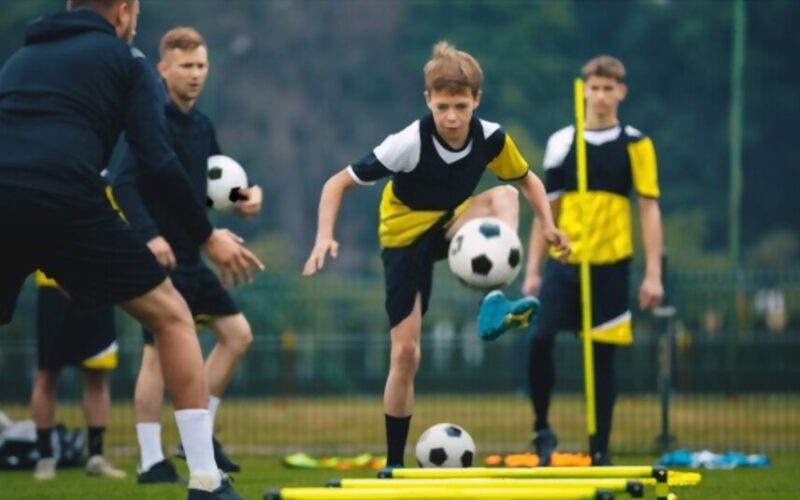Soccer drills are a critical part of the development of young players. They can teach soccer skills that many players are not taught in traditional soccer schools. These drills can help improve individual skill levels and promote team play and tactics, even among children who have no previous experience in competitive soccer. This article provides an overview of some common drills, including kicking and volleying practice, and some tactics employed by these training exercises. This will hopefully allow you to understand better how one of the world’s most popular sports can be improved through the use of drills.
Build Up Drills – Individual Soccer Training Drills
Build-Up drills are designed to build up players’ ball control and dribbling skills and passing skills. Young players need to build their skills first before starting working on team tactics and team play. For this reason, these types of Individual Soccer Training Drills are usually done individually or with just a pair or two of players at one time, with an experienced coach overseeing the training exercise.
One common build-up drill involves players passing the ball to one another using various touches. Passes can be made using the top of the foot, the side of the foot, or using a backheel touch. You can also add in more touches with your head. Players should try to feel when and where they can move upfield after passing the ball and receiving passes from others. This is an important exercise that helps players recognize and remember how certain plays are set up during a game.
Another type of build-up drill is designed to improve speed and quickness and control over the ball. For this reason, it is important to incorporate more touches of the ball. Players should play in small areas removed from the rest of the team and their opponents. To gain maximum dribbling benefits, players should have a limited time to pass the ball in this drill. The player with the ball should control it for four or five touches before passing it off to someone else. After receiving a pass, players can advance upfield and rejoin play again after another few touches on the ball. These types of Individual Soccer Training Drills are designed to tire out player’s legs so that they will be used in actual games when dribbling upfield against an opponent’s defense line, which will be covered later in this article.
Dribbling Drills
Dribbling drills are designed to help players improve their dribbling skills. Of course, every player has to be able to dribble to play soccer. These drills allow players to work on dribbling skills in a controlled environment and away from defenders. In many cases, these drills are also used for fun and enjoyment, as they involve only a small group of players that have already mastered the basics of the sport.
One of the most common forms of individual soccer training is called “keep away”. This type of drill involves two teams with only one player each. Both players stand on a line facing each other with a ball. The first one to lose the ball, get tripped up, or touch someone else loses the game. This drill helps players improve their dribbling by attacking space defended by another player instead of an opposing team during a real game.
Another important type of dribbling exercise is called “dribble tag.” This drill involves two teams with three players each, all of whom are in pairs. The first player with the ball in every pair will be considered the defender’s target, while the other player in each pair is the attacker. The attacker’s goal is to dribble past the defender without getting tackled or tripped up, while the defender’s goal is to prevent the attacker from doing so. Each pair of players will change positions after each round, and points will be given for various tactics.
